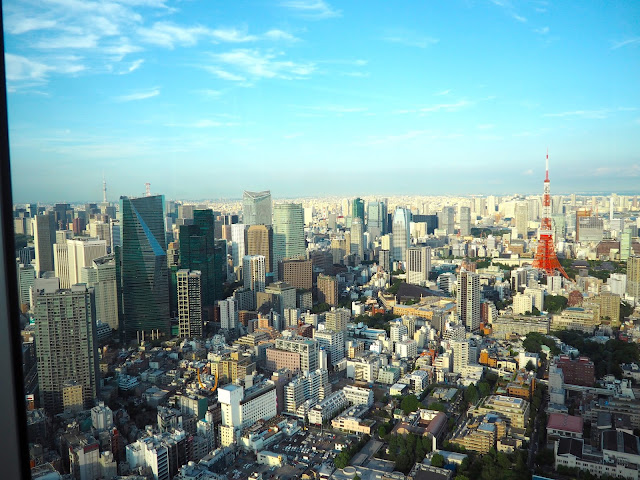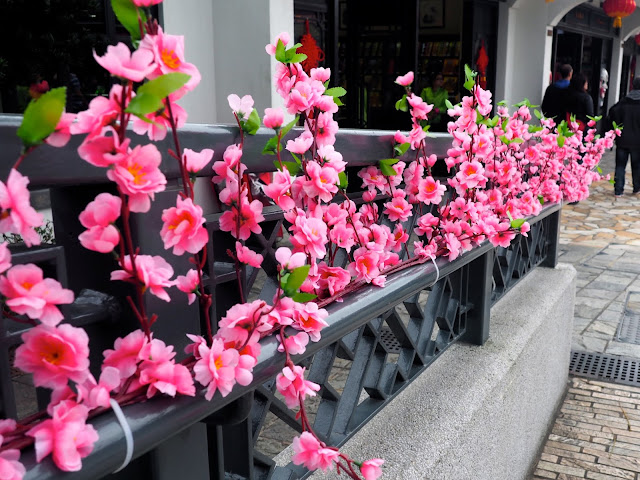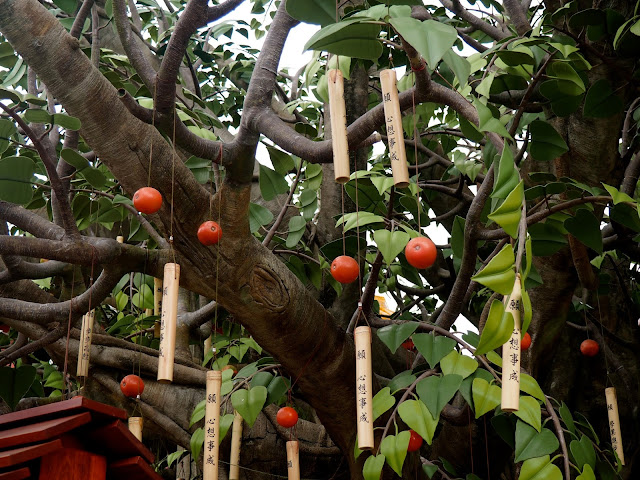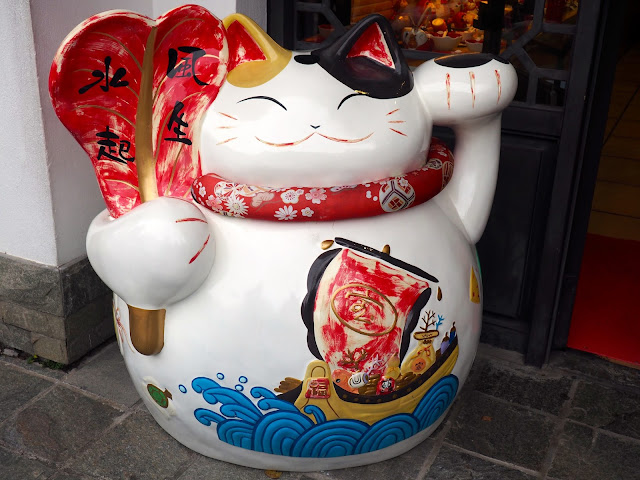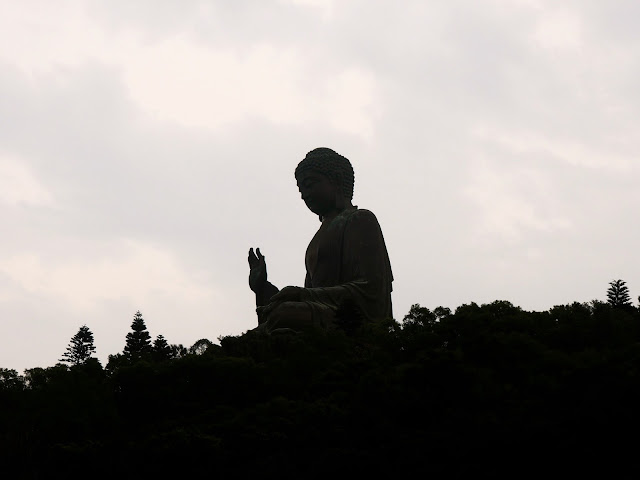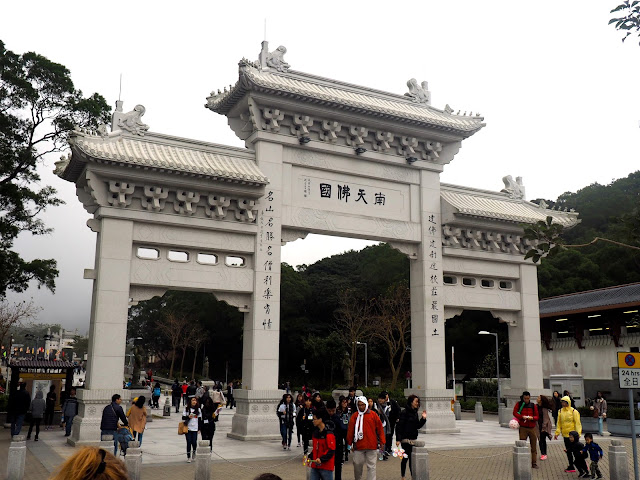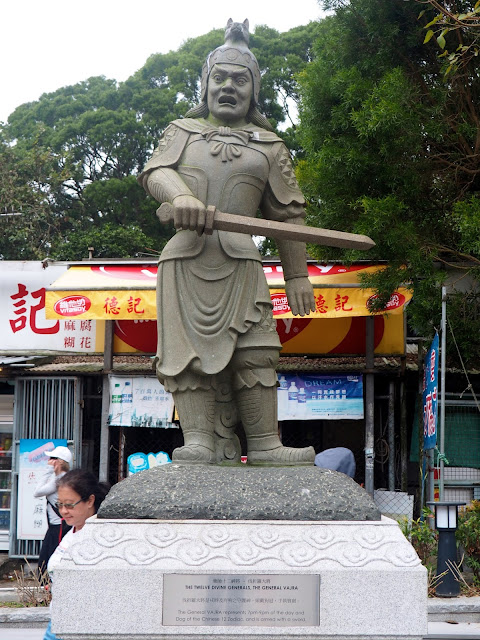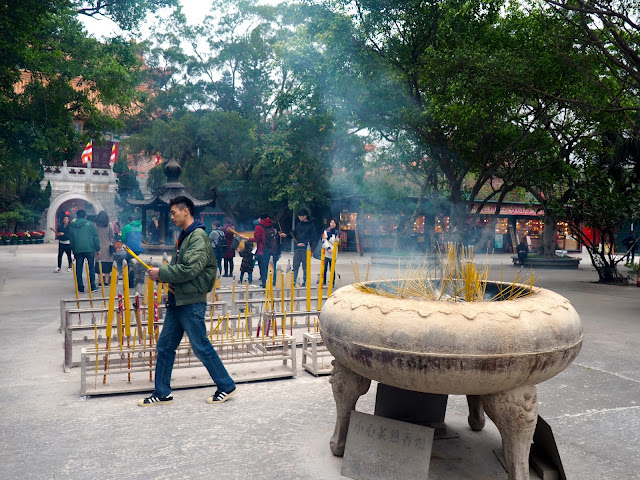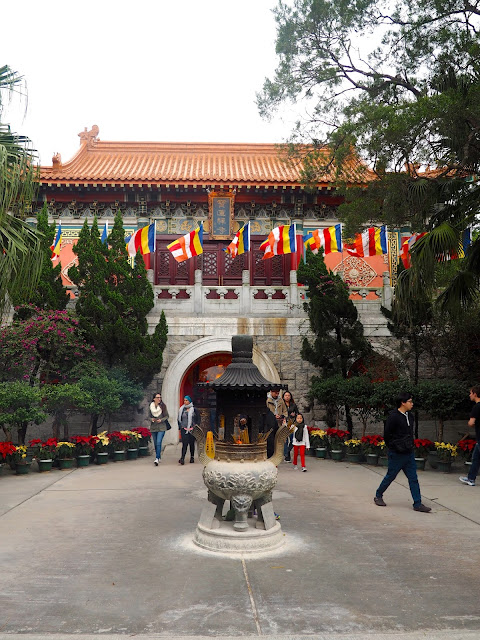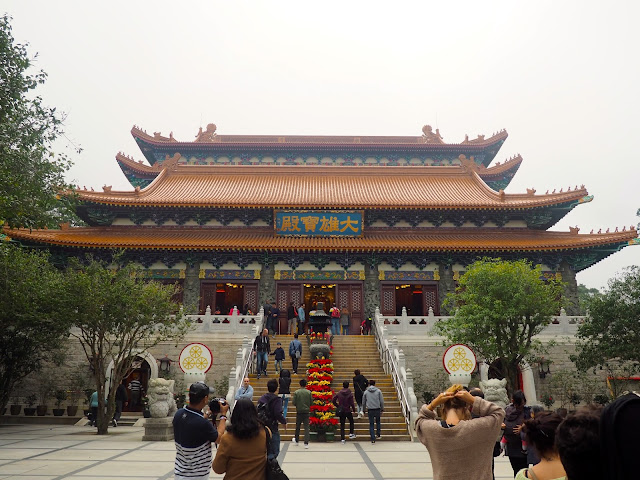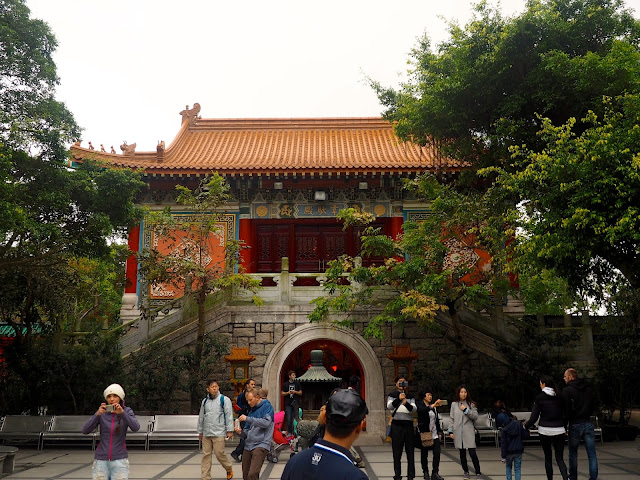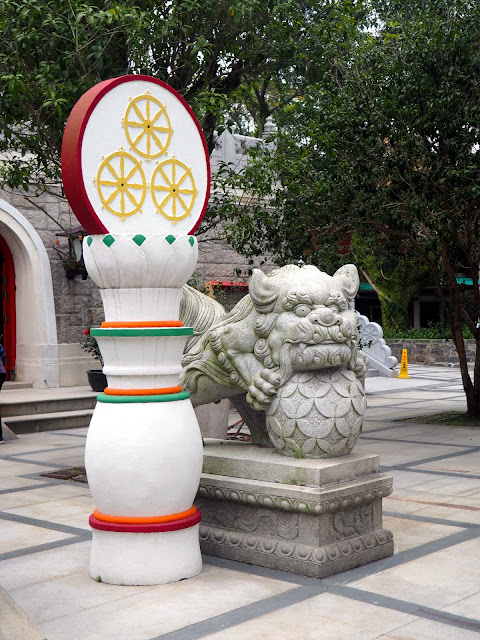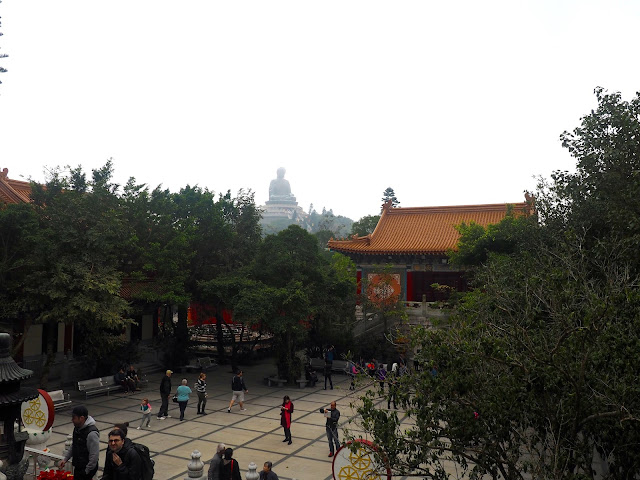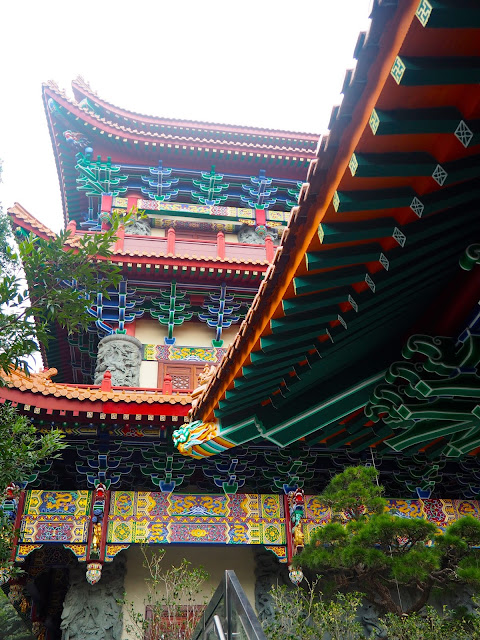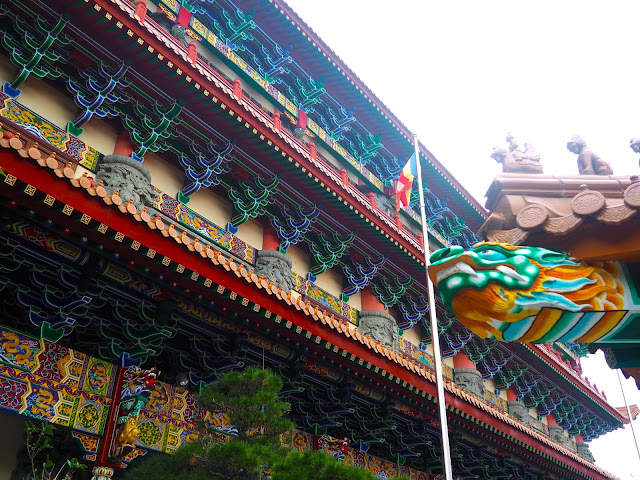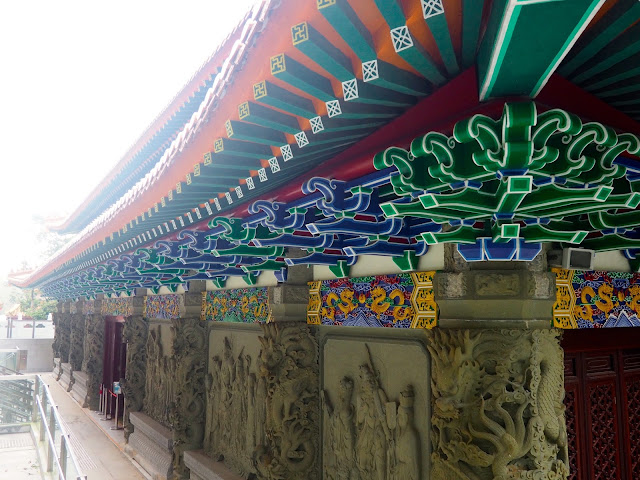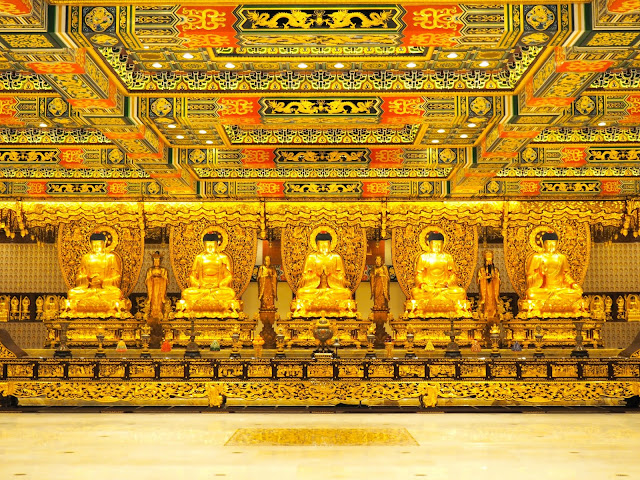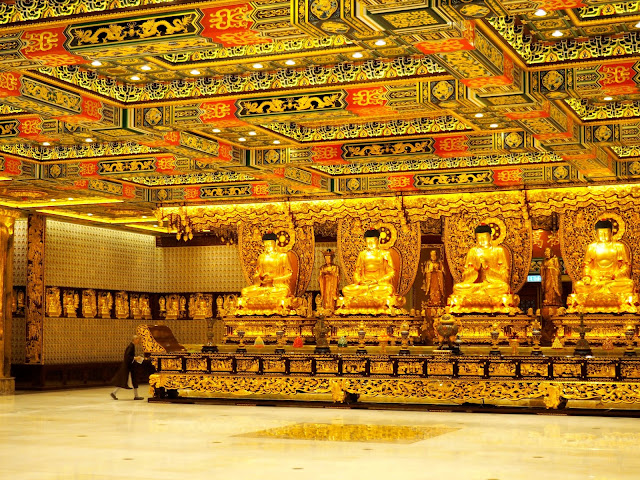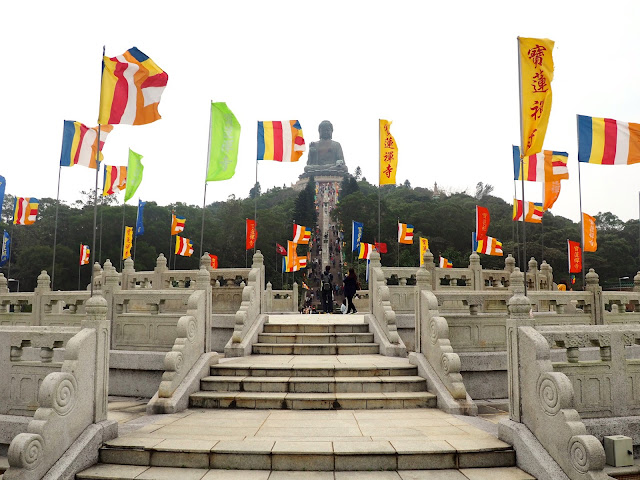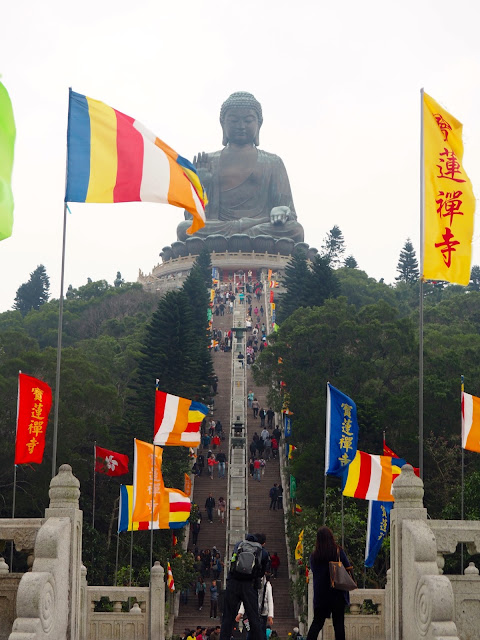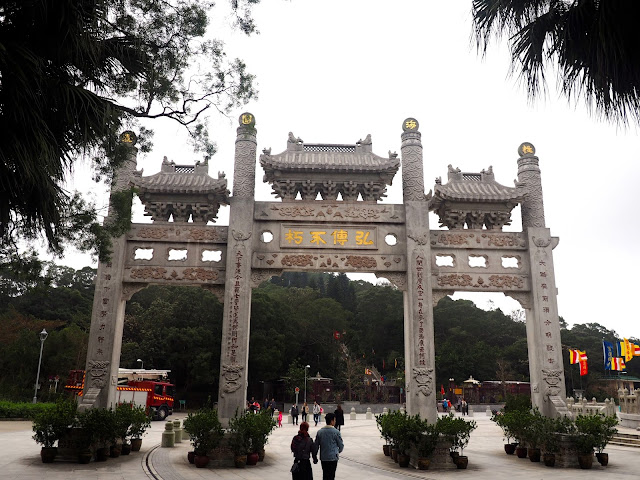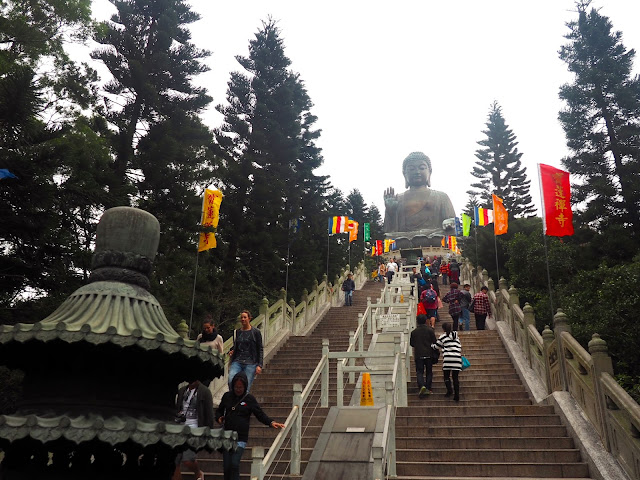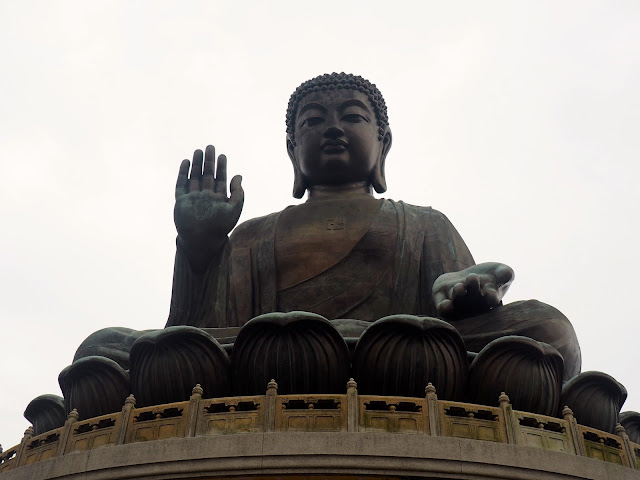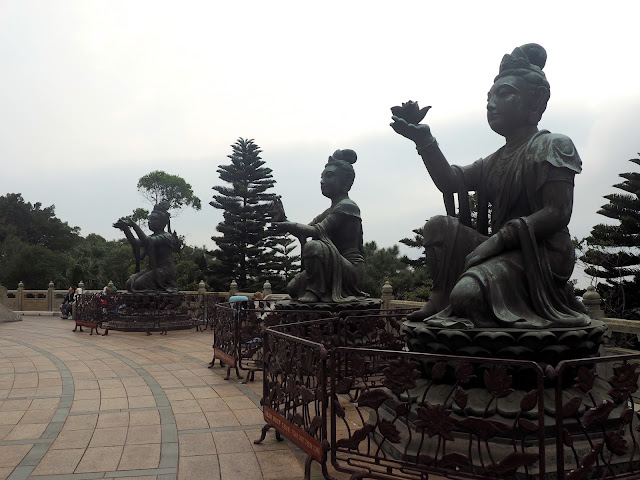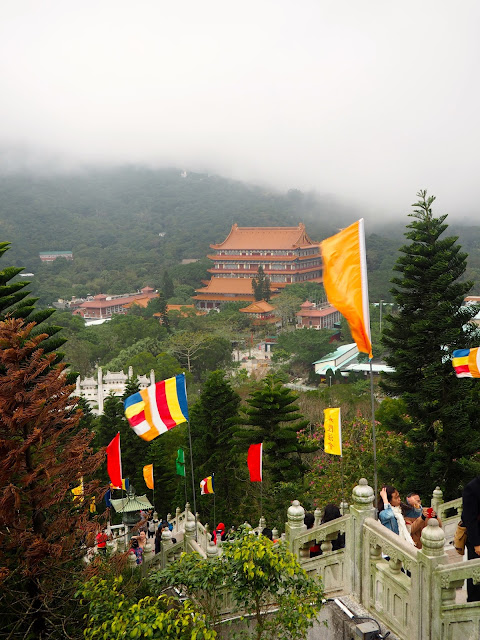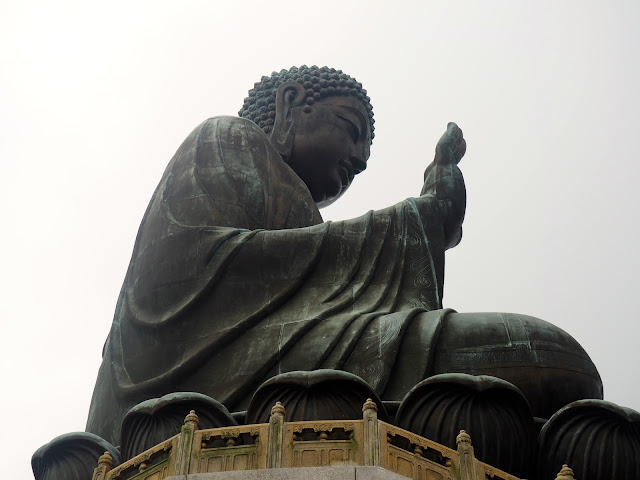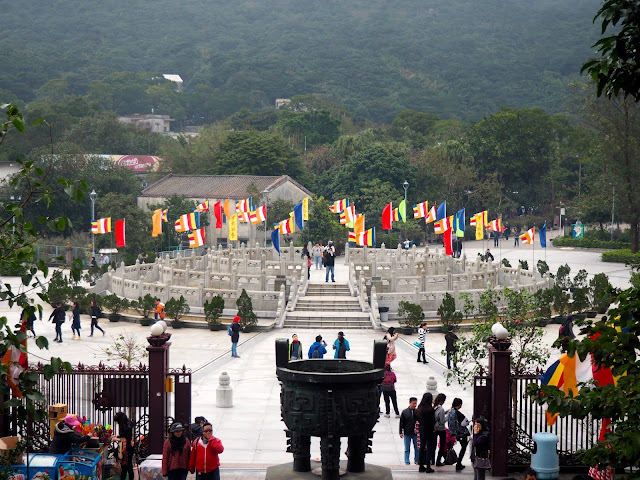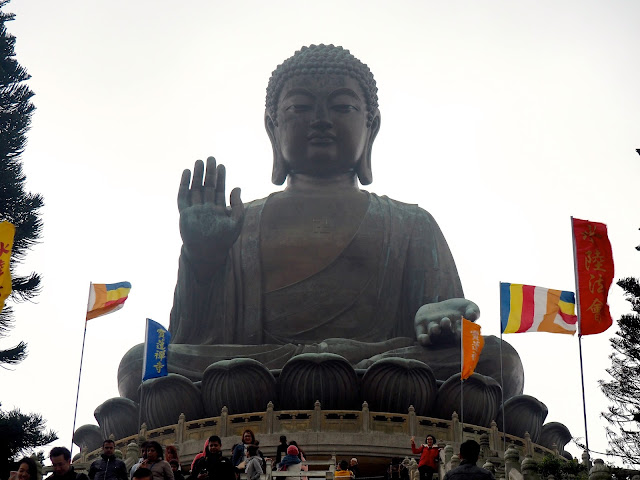
The Big Buddha | Hong Kong
Ngong Ping village is right next to the bus stop, and we headed here first for food and coffee. The street is mainly composed of souvenir shops and restaurants, but it’s still quite pretty to wander around, especially since there was pink blossom everywhere during our visit. I’ve found a lot of souvenir shops and stalls in Hong Kong do have some really nice things, not just tourist tat, and there were a few other shops scattered throughout, selling vintage clothes or cute trinkets and such. We also went to a tea shop (near the cable car terminus) to try the honey jasmine tea my friend was raving about, having been before, and it turned out to be pretty good! The village and piazza also have lots of cows and dogs roaming free, and it was quite amusing to watch a cow stick its head in a bin looking for food! I’m not sure where they come from or why they’re there though. From the village, we walked under the massive archway and down the piazza, which is lined with statues of the warriors of the Chinese Zodiac – the one pictured above is for the Year of the Dog, the year in which I was born.
However, nothing can overshadow the vastness of the Big Buddha. We left the monastery and walked through the worship plaza, with yet more incense sticks, and passed under another grand archway. From there, it is 260 steps up the hills for a closer look at the Buddha. It’s certainly worth it though, for that close-up look at it, and you sort of have to climb up after coming all the way to Ngong Ping to see it. The lower podium is also host to the six Bodhissatva statues looking up at the Buddha. There are various chambers inside the statue, home to a museum and relics, but we didn’t go inside it on this visit. We did walk the circumference of the statue though, which would certainly offer some lovely views I’d guess, on a less cloudy day. We could look back down on the monastery though, and see the cable cars gliding through the clouds, between the hills in the distance. After some obligatory selfies in front of the statue, we descended the stairs again and went back down to the village, at which point we cancelled our planned hike since it was cold, cloudy, and starting to rain. It was still a good day out though, and I’m very glad that I finally got to see the Big Buddha in person.
Outfit - New Year
You May Also Like
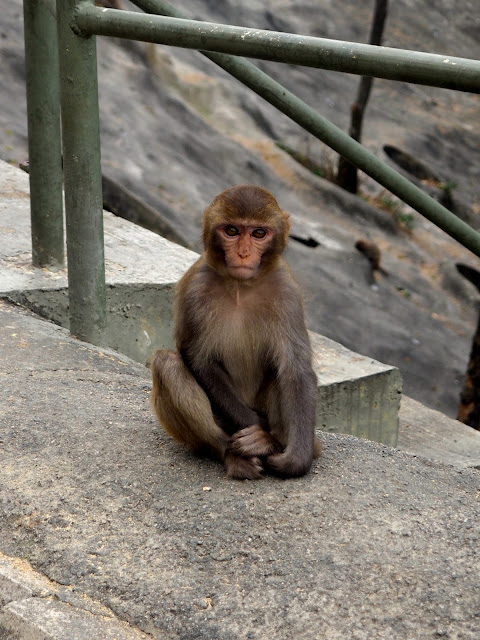
Monkey Mountain
9 March 2016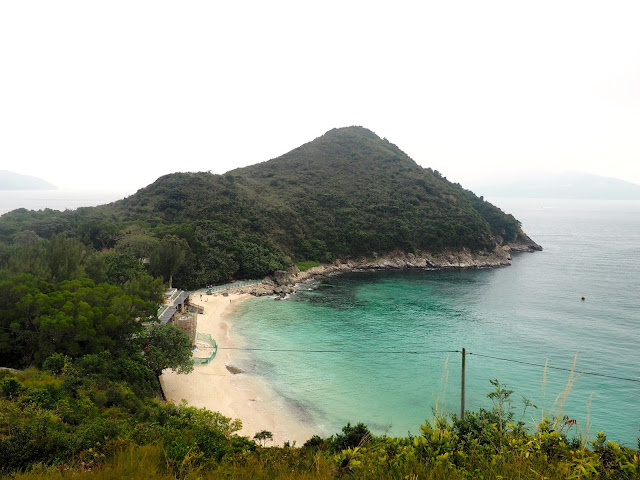
Hiking Sharp Island
27 February 2017